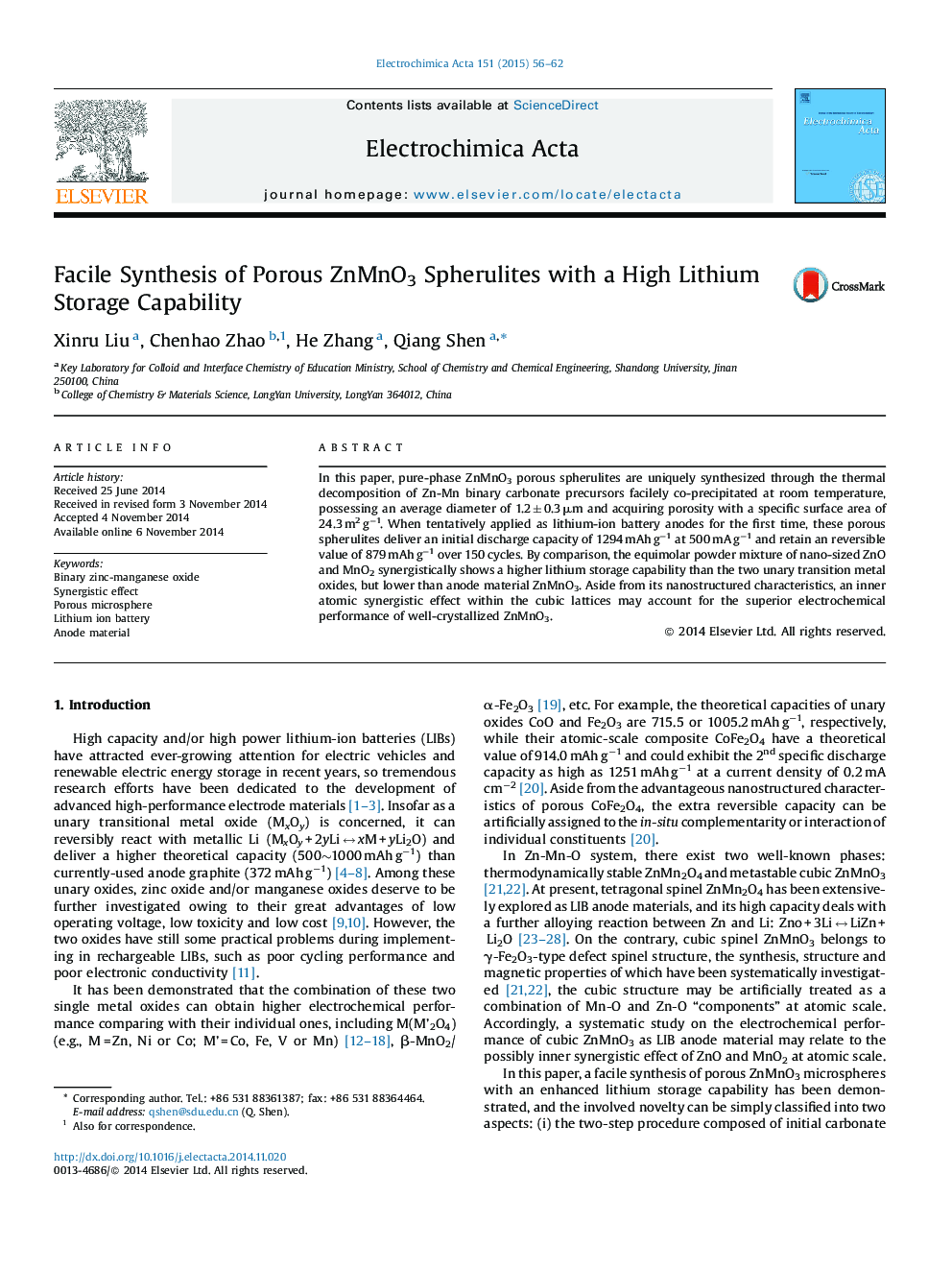| Article ID | Journal | Published Year | Pages | File Type |
|---|---|---|---|---|
| 184810 | Electrochimica Acta | 2015 | 7 Pages |
•Composite Zn0.5Mn0.5CO3 microspheres are facilely co-precipitated.•Porous ZnMnO3 spherulites can be used as a lithium-ion battery anode.•Porous ZnMnO3 spherulites show superior electrochemical properties.•A synergistic effect of Zn-O and Mn-O components in cubic ZnMnO3 is proposed.
In this paper, pure-phase ZnMnO3 porous spherulites are uniquely synthesized through the thermal decomposition of Zn-Mn binary carbonate precursors facilely co-precipitated at room temperature, possessing an average diameter of 1.2 ± 0.3 μm and acquiring porosity with a specific surface area of 24.3 m2 g−1. When tentatively applied as lithium-ion battery anodes for the first time, these porous spherulites deliver an initial discharge capacity of 1294 mAh g−1 at 500 mA g−1 and retain an reversible value of 879 mAh g−1 over 150 cycles. By comparison, the equimolar powder mixture of nano-sized ZnO and MnO2 synergistically shows a higher lithium storage capability than the two unary transition metal oxides, but lower than anode material ZnMnO3. Aside from its nanostructured characteristics, an inner atomic synergistic effect within the cubic lattices may account for the superior electrochemical performance of well-crystallized ZnMnO3.
Graphical abstractPorous ZnMnO3 spherulites show an enhanced high lithium storage capability when potentially applied as a lithium-ion battery anode for the first time.Figure optionsDownload full-size imageDownload as PowerPoint slide
